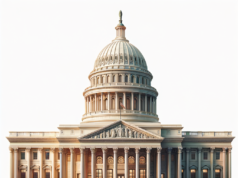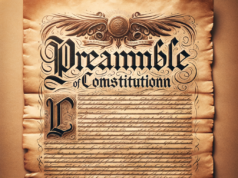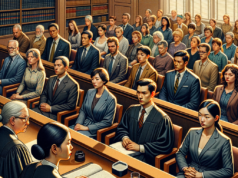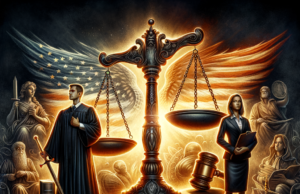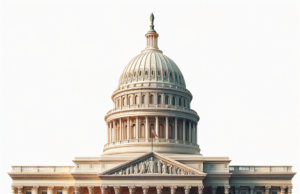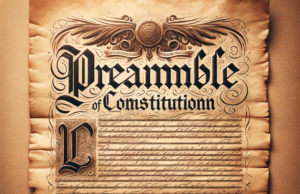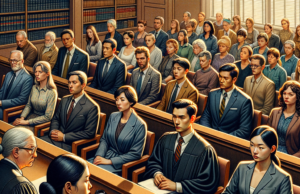Contents
- 1 Understanding Concealed Carry Laws: A Comprehensive Overview of Regulations and Variations
- 2 The Historical Context of Concealed Carry: How Laws Have Evolved Over Time
- 3 The Impact of Concealed Carry Laws on Crime Rates: Analyzing the Evidence and Statistics
- 4 Public Perception and Misconceptions: Debunking Common Myths About Concealed Carry
- 5 The Role of Training and Safety: Ensuring Responsible Gun Ownership and Usage
- 6 Future Trends in Concealed Carry Legislation: What to Expect in the Coming Years
In recent years, concealed carry laws have become a focal point of national debate, intertwining issues of personal freedom, public safety, and the Second Amendment. As states adopt varying regulations, understanding the complexities of these laws is crucial for informed discourse. This article delves into the multifaceted realities of concealed carry laws, exploring their historical evolution, impact on crime rates, public perceptions, training requirements, and future trends.
Understanding Concealed Carry Laws: A Comprehensive Overview of Regulations and Variations
Concealed carry laws govern the legal carrying of firearms in a concealed manner, typically requiring individuals to obtain permits or licenses. These regulations vary significantly across states, with some jurisdictions adopting “shall-issue” laws, which mandate the issuance of permits if applicants meet specific criteria, while others employ “may-issue” laws, granting authorities discretion over permit issuance. Additionally, several states have enacted constitutional carry laws, allowing individuals to carry concealed firearms without a permit. The patchwork of regulations creates a complex landscape that can confuse both gun owners and law enforcement, highlighting the need for a comprehensive understanding of local laws.
The Historical Context of Concealed Carry: How Laws Have Evolved Over Time
The roots of concealed carry laws in the United States can be traced back to the early 19th century, when states began to regulate the carrying of firearms in public spaces. Initially, laws were often restrictive, reflecting societal concerns about violence and public safety. The landmark Supreme Court case, District of Columbia v. Heller (2008), affirmed an individual’s right to possess firearms for self-defense, leading to a gradual shift in public policy. Over the past two decades, many states have liberalized their concealed carry laws, driven by advocacy from gun rights organizations and changing public attitudes toward self-defense. This evolution reflects a broader cultural dialogue about personal safety and individual rights.
The Impact of Concealed Carry Laws on Crime Rates: Analyzing the Evidence and Statistics
The relationship between concealed carry laws and crime rates remains a contentious topic among researchers and policymakers. Proponents of concealed carry argue that allowing law-abiding citizens to carry firearms deters crime, citing studies that suggest a correlation between increased gun ownership and decreased violent crime rates. Conversely, critics contend that more guns in public spaces lead to higher rates of gun-related incidents and accidents. Comprehensive analyses, such as those conducted by the National Academy of Sciences, indicate that the evidence is mixed, with some studies showing no significant impact on crime rates. This ongoing debate underscores the complexity of assessing the laws’ effectiveness in enhancing public safety.
Public Perception and Misconceptions: Debunking Common Myths About Concealed Carry
Public perception of concealed carry laws is often shaped by misconceptions and media portrayals. A prevalent myth is that concealed carry leads to an increase in violent crime, despite evidence suggesting otherwise. Additionally, many believe that concealed carry permit holders are more likely to commit crimes, when in fact, studies have shown that permit holders tend to be law-abiding citizens. Another common misconception is that concealed carry laws disproportionately benefit urban areas, while rural populations often advocate for these laws to enhance personal safety in less populated regions. Addressing these misconceptions is crucial for fostering informed discussions about the implications of concealed carry legislation.
The Role of Training and Safety: Ensuring Responsible Gun Ownership and Usage
Training and safety are paramount in the discussion of concealed carry laws. Many states require applicants to complete a training course that covers firearm safety, handling, and legal responsibilities. These training programs aim to ensure that individuals understand the serious implications of carrying a firearm and are equipped to handle it safely. However, the quality and rigor of training requirements vary widely, with some states imposing minimal standards. Advocates for responsible gun ownership emphasize the importance of ongoing education and training to promote safe practices and reduce the risk of accidents or misuse. As concealed carry becomes more prevalent, the conversation around training and safety will likely intensify.
Future Trends in Concealed Carry Legislation: What to Expect in the Coming Years
As societal attitudes toward firearms continue to evolve, the future of concealed carry legislation remains uncertain. Several trends are emerging, including a push for national reciprocity, which would allow concealed carry permits issued in one state to be recognized in others. Additionally, there is growing advocacy for more stringent training requirements and background checks to ensure responsible gun ownership. Conversely, some states are moving toward more permissive laws, reflecting a broader cultural shift toward individual rights and self-defense. The interplay of these trends will shape the landscape of concealed carry laws in the coming years, necessitating ongoing dialogue among lawmakers, advocates, and the public.
The complexities surrounding concealed carry laws reveal a dynamic interplay of history, regulation, public perception, and safety considerations. As the debate continues, it is essential for stakeholders to engage in informed discussions that consider the diverse perspectives and evidence surrounding these laws. Understanding the hidden realities of concealed carry is crucial for navigating the future of gun legislation and ensuring that the rights and safety of all citizens are upheld.




